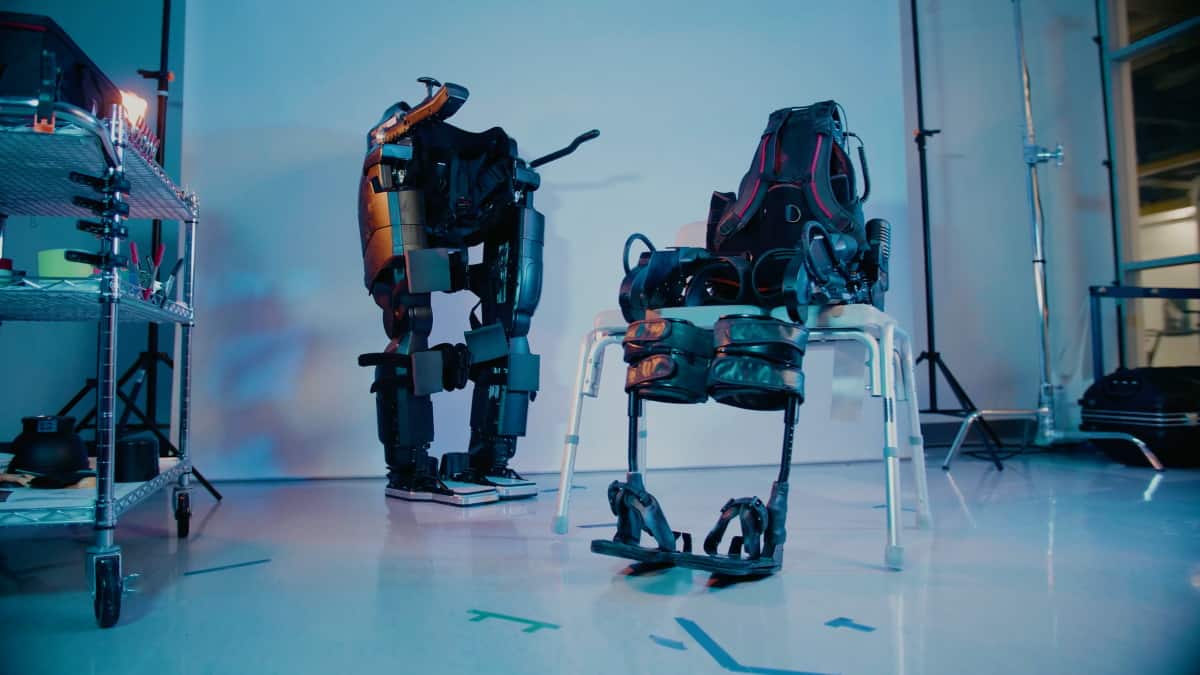Stroke – a life-threatening condition in which a blockage or bleed cuts off the brain’s blood supply – can cause serious long-term disabilities. Survivors often suffer from neurological impairments that result in diminished mobility and hemiparesis, weakness or paralysis on one side of the body.
One approach used to help stroke survivors regain walking ability is the lower-limb powered exoskeleton, a wearable machine that helps patients stand and walk during rehabilitation. A research team headed up at the University of Texas Health Science Center has now performed a detailed study of how such a powered exoskeleton affects patients’ neuromuscular coordination following a stroke. They describe their findings in the Journal of Neural Engineering.
“Traditional therapy usually involves two or three physical therapists manually guiding a patient’s impaired limb to follow and reinforce the desired trajectories, which can be very labour-intensive and even unsafe,” explains first author Fangshi Zhu. “The powerful motors from the exoskeleton can deliver accurately controlled assisting torques to the impaired joints during the mass practice of task-specific activities and liberate the therapists from the heavy manual labour.”
In the first part of the investigation, 11 able-bodied subjects and 10 stroke subjects underwent a walking assessment on a treadmill, during which the researchers captured motion data and monitored lower-limb muscle activities. By comparing parameters between the two groups, they characterized normal gait patterns and post-stroke motor deficits. Compared with the able-bodied controls, stroke subjects had significantly slower walking speed, shorter step length, lower foot clearance and increased gait asymmetry.
The researchers found that among able-bodied subjects, four distinct muscle synergies (or motor modules, groups of muscles that cooperate to accomplish a motor task) were needed to describe lower-limb muscle activities during steady walking. For the stroke subjects, three motor modules were sufficient in their paretic leg. The team note that this reduced inter-muscle coordination complexity leads to poorer locomotion performance.
Gait training
In the second part of the study, five of the stroke subjects underwent gait training using the Ekso 1.1, a lightweight lower-limb exoskeleton equipped with powered actuators at the hip and knee joints. The participants had between 10 and 15 sessions of gait training, during which they walked with the exoskeleton for up to 50 minutes, guided by a physical therapist as needed.

Throughout each training session, the researchers used electromyography to monitor the activity of eight muscles and optical tracking to capture the motion of eight body segments and 18 bony landmarks. Before and after training, they assessed participants’ walking speed, step length, foot clearance height and stance-to-swing time ratio. Results showed that the gait training did not significantly improve stroke subjects’ locomotion performance or inter-muscular coordination (the number of motor modules needed to reconstruct walking).
The researchers surmise that this lack of improvement could be due to the subjects receiving too few training sessions and/or insufficient exercise intensity within each session. They also point out that the study participants were examined long after their neural injury (13 months post-stroke in one case; three years or more in the others). As recovery from stroke is fastest in the first few weeks, this delayed intervention could also lead to reduced effectiveness.
Walking assistance
While exoskeleton-assisted gait training had limited impact on stroke subjects’ locomotion performance, wearing the exoskeleton immediately altered their lower-limb muscle synergy pattern.
Active assistance from the hip and knee actuators and passive assistance from the footplate increased the paretic leg motor coordination complexity, resolved foot drop issues, and guided stroke subjects to shift abnormal motor module activation towards the normal pattern seen in the able-bodied group.
These changes were described by the researchers as “a prominent positive impact the Ekso had on the stroke subjects”. The exoskeleton did, however, also have negative influences on motor modules for the hamstrings and quadriceps, due to excessive assistance or restrictions that subjects tried to resist.
The researchers conclude that their findings reveal the potential of using a powered exoskeleton to augment impaired gait and help stroke survivors regain normal walking ability in a long-term rehabilitation programme. The study also demonstrates the use of muscle synergy analysis to evaluate the effect of exoskeleton training, which could help inform future protocols.

Upper arm rehabilitation after severe stroke: where are we?
Zhu notes that while this study provides insight into how one particular exoskeleton affects a single patient group, other types of exoskeleton have been used in clinical centres to help a wider population regain compromised motor ability after neural injuries.
“Therefore, we are trying to expand this study to a broader scale,” Zhu tells Physics World. “In the Center for Wearable Exoskeletons, we have an ongoing clinical trial study investigating the effect of three different lower-limb powered exoskeletons on three post-neural injury populations (stroke, spinal cord injury and multiple sclerosis). The objective is to understand the impact of each robot’s assistance on each population so that in clinical application, we could select the best treatment device for the right population group to maximize the therapeutic benefits.”



